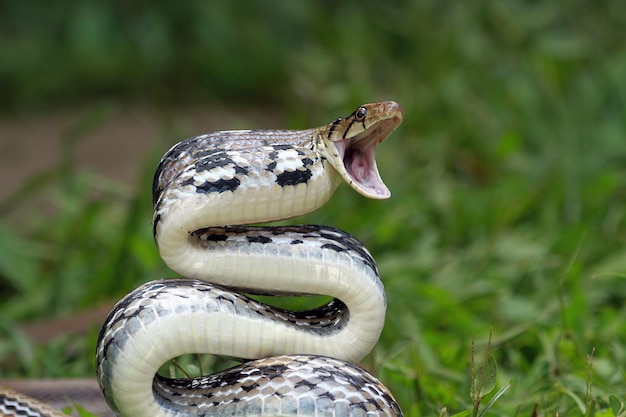Anaconda Facts – Everything You Need to Know

Anacondas are the world’s largest snakes.
The word anaconda comes from the Tamil language.
Anacondas can grow up to 30 feet long.
They can weigh up to 550 pounds.
Anacondas are excellent swimmers.
They are typically found in the rainforests of South America.
Anacondas are non-venomous snakes.
Despite their size, they are not a threat to humans unless provoked.
They have a reputation for being powerful constrictors.
Anacondas are ambush predators, waiting for prey to pass by before attacking.
They primarily eat large mammals, like deer and pigs.
Anacondas can go weeks or even months without eating.
They have a slow metabolism, allowing them to survive in environments with scarce food.
Anacondas give birth to live young, rather than laying eggs.
Female anacondas can give birth to up to 80 snakelets at once.
Despite popular belief, it is the female anaconda that is larger and more aggressive.
The green anaconda is the most well-known species, but there are other types as well.
Anacondas have a lifespan of around 10-12 years in the wild.
They have a distinctive pattern on their skin that helps them blend into their environment.
Anacondas have heat-sensing pits on their faces, allowing them to detect prey in the dark.
They can stay submerged underwater for 10-15 minutes before needing to come up for air.
Anacondas have flexible jaws that allow them to swallow prey much larger than their head.
Anaconda Facts – Everything You Need to Know part 2
They have rows of sharp teeth that help them grip onto their prey while constricting.
Anacondas shed their skin several times a year.
Shedding their skin helps them get rid of parasites and maintain a healthy outer layer.
Anacondas are solitary creatures and prefer to live alone.
They are most active at night, hunting under the cover of darkness.
Anacondas are excellent climbers and can scale trees with ease.
They use their powerful muscular bodies to navigate through the forest.
Anacondas have been known to prey on caimans and other large crocodile species.
They have a unique digestive system that allows them to break down bones.
The Amazon rainforest has the highest population of anacondas in the world.
The age of an anaconda can be determined by counting the rings on its scales.
Anacondas can survive in both freshwater and saltwater habitats.
They play a crucial role in the ecosystem by regulating prey populations.
Anacondas are capable of extreme bursts of speed when they need to catch a meal.
They have muscular bodies that are built for power and agility.
Anacondas have been observed mating in a tangled ball of multiple snakes.
They are surprisingly graceful swimmers, capable of gliding through the water with ease.
Anacondas are masters of camouflage, making them difficult to spot.
The mating season for anacondas usually occurs between April and May.
Male anacondas fight each other for the right to mate with a female.
Anacondas have been the subject of many myths and legends, both in indigenous cultures and modern media.
They have an important role in the cultural and spiritual beliefs of indigenous communities.
Despite their intimidating reputation, anacondas are fascinating creatures worthy of admiration and conservation efforts.

